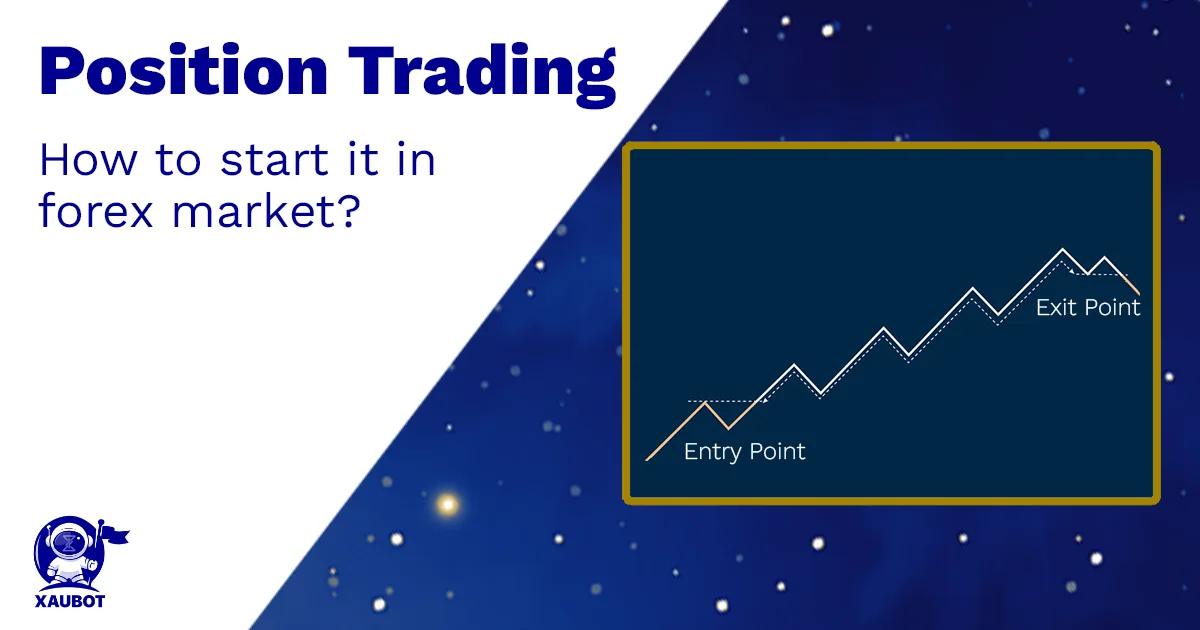One of the most important differences that is regarded between various trading styles and strategies is the length for holding a certain position in a trade. For example in day trading, positions can be opened and closed very quickly, even in terms of hours or minutes. A bit longer than that we would have a trading style such as swing trading in which positions can remain open for even weeks.
Taking all of these a step further, this is where we get to the style of forex trading known as position trading.
In position trading, trades can remain open for months, if not years! If you are thinking about the mischievous HODL concept for crypto, then you are kind of right. Because position trading is very similar to that. In fact, both of these can be regarded as interchangeable with investing.
Investing is usually a notion that is not often opposed to trading. Some people trade and some people invest.
But with position trading in forex markets, this is where trading and investing meet. Let’s delve into it deeply.
A Closer Look at Forex Position Trading
The nature of position trading is so different from other trading styles. In position trading you hold a long position(Long Position in Forex) for a very “long” time. This is exactly why analysis is even more important. It goes without saying how terrible it would be if the starting point is off even by a small factor.
Therefore, because the scale is much larger, numerous factors can impact the outcome of the trade. So it takes a really experienced, seasoned, and patient trader to execute position trading successfully.
Other than considering countless factors in order to properly predict the future price movements, stop loss levels can be very huge compared to other forms of trading.
This again goes back to the nature of position trading. Since it takes so long, this is why we have much larger stop loss levels. Naturally, this could mean that your losses could amount to much larger figures. Of course, vice versa is true as well. In position trading, potential profits can also be innumerably large.
Another peculiarity of position trading is that it might require a higher initial capital compared to other trading styles. Clearly because positions are held for a long time, more capital is needed for a higher profit. So if you are leverage trading, be careful about margin calls in this type of trading.
All in all, position trading requires patience on the part of the forex trader as it takes a long time and also full trust in your trading prowess. Because your position might experience serious ups and downs. But you need to be rest assured that in the end it will come up on the positive side.
What Are Different Kinds of Position Trading?
Even though because of the sort of big-picture format of position trading, fundamental analysis is crucially important for it, the significance of technical analysis cannot be overlooked.
As such due to the variability that exists in technical analysis, we also have a variety in different kinds of positions trading with regard to technical analysis, which will be discussed here.
Also Reading: Position Sizing in Forex Definition
Position Trading with Moving Averages
Moving averages which track on average the price movements that have occurred in the two time periods of 50 and 200 days are crucially important in position trading.
Clearly moving averages would be useful for position trading since they track the market in the long term to provide the trends that exist in the market.
In terms of the 50-day and 200-day time windows that was mentioned earlier, we could have three general outcomes for position trading. If the two averages intersect, it could indicate that possibly a new trend is forming. If the 50-day average moves over the 200-day average it is indicative of a great opportunity that the market might be getting bullish. On the other hand, if it goes under the longer average period then the market might be headed for tough times.
This is a general scheme of how moving averages as a whole can be useful and practical for forex position traders.
Position Trading with Support and Resistance Levels
You might think to yourself that support and resistance levels are important no matter what style or strategy of trading you have. And you’d be right. But the difference with position trading is that we consider these two lines in terms of their historical figures.
Therefore, the simple definition for the support line might be the lowest price that a trading pair has experienced during a day or even less. Historical support levels indicate the bottom price for an asset or trading pair that has held for years and that will in all likelihood hold for years to come.
The same is true for the resistance line. Even though a temporary resistance line defined the maximum price for an asset or trading pair in a given time window, historical resistance levels indicate the maximum price the asset or trading pair has even been able to climb or will likely be able to climb in the future.
Therefore, these two historical lines can be very dependable and also provide useful information for forex position traders.
Breakout Position Trading

breakout position trading
First of all, what is a breakout? In simple terms, it is believed that a breakout occurs when the price of an asset or trading pair breaks its support or resistance line. Although this breakout from either support or resistance should be confirmed by an uptick in the trading volume.
So how can a breakout be useful in position trading? A breakout is usually an early sign of a new trend. Given the importance of trends in position trading, breakouts could be used to carry out successful trades by detecting trends in their early stages.
Pullback Position Trading
Unlike a breakout, a pullback is a shorter term dip in the opposite direction during any given market trend, be it bearish or bullish.
Imagine there is a trend going on in the market. Of course this trend, which is the long term trajectory of the prices, has been detected earlier by the forex position trader.
With regard to a pullback, there are two possible scenarios:
First if the trend is bullish, then the pullback ought to be utilized by the forex trader by buying when prices are lower and then selling right before the pullback. Then when the pullback occurs, the trader can assume a long or buy position when prices get even lower. This way, when the pullback is over, assets can be sold for a higher price.
Secondly, if the trend is bearish and the pullback is about to occur, the forex trader should sell before prices get too low and then buy prior to the pullback. When the pullback takes place and the prices go a bit higher for a short period, another short or selling position can be assumed – i.e. to sell again when prices get high shortly.
Conclusion
Position trading is a rather unique forex trading style. It demands that forex traders be great decision makers in order to be able to rightfully predict the upcoming conditions of the market.
It also necessitates that the forex trader has a good command on fundamental analysis techniques, as they play a crucial role in predicting general trends in the market.
And of course, if you are patient enough, with position trading, you will be able to reap the best rewards in the foreign exchange market.
